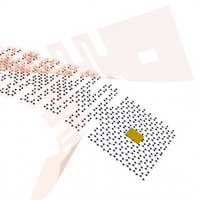 As wearable sensors become more prevalent, the need for a material resistant to damage from the stress and strains of the human body's natural movement becomes ever more crucial. To that end, researchers have developed a method of adopting kirigami architectures to help materials become more strain tolerant and more adaptable to movement.
As wearable sensors become more prevalent, the need for a material resistant to damage from the stress and strains of the human body's natural movement becomes ever more crucial. To that end, researchers have developed a method of adopting kirigami architectures to help materials become more strain tolerant and more adaptable to movement.
Oct 22nd, 2019
Read more
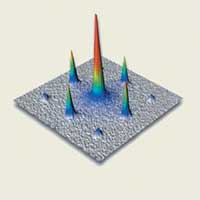 Spin-polarizing scanning tunneling microscopy allowed researchers to detect an elusive atomic-scale magnetic signal in a Mott insulator.
Spin-polarizing scanning tunneling microscopy allowed researchers to detect an elusive atomic-scale magnetic signal in a Mott insulator.
Oct 22nd, 2019
Read more
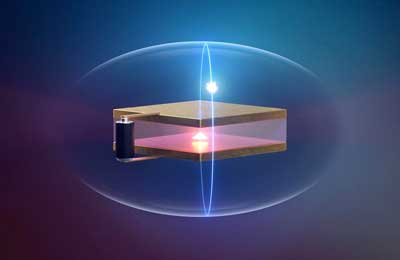 Researchers have succeeded in creating an efficient quantum-mechanical light-matter interface using a microscopic cavity. Within this cavity, a single photon is emitted and absorbed up to 10 times by an artificial atom. This opens up new prospects for quantum technology.
Researchers have succeeded in creating an efficient quantum-mechanical light-matter interface using a microscopic cavity. Within this cavity, a single photon is emitted and absorbed up to 10 times by an artificial atom. This opens up new prospects for quantum technology.
Oct 21st, 2019
Read more
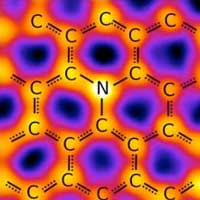 Researchers have found unexpected new configurations of oxygen and nitrogen in graphene.
Researchers have found unexpected new configurations of oxygen and nitrogen in graphene.
Oct 21st, 2019
Read more
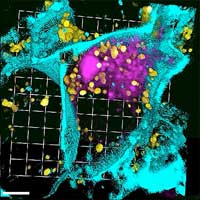 A preclinical study finds that the novel nanoparticle delivers gene-level treatment to suppress KRAS-driven cancer without adverse effects.
A preclinical study finds that the novel nanoparticle delivers gene-level treatment to suppress KRAS-driven cancer without adverse effects.
Oct 21st, 2019
Read more
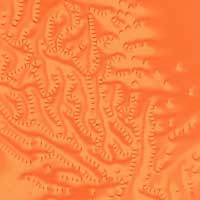 Take a dive into what may be the world's smallest coral reef. Scientists are using a type of material called liquid crystals to create incredibly small, swirling schools of 'fish'.
Take a dive into what may be the world's smallest coral reef. Scientists are using a type of material called liquid crystals to create incredibly small, swirling schools of 'fish'.
Oct 21st, 2019
Read more
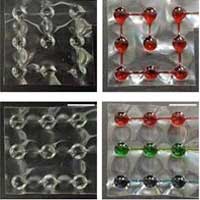 Researchers have developed a technology to produce 3D soft and flexible devices by blowing balloons made of polymeric thin films. Can be made in various 3D shapes... Expected to have diverse medical and biomedical applications.
Researchers have developed a technology to produce 3D soft and flexible devices by blowing balloons made of polymeric thin films. Can be made in various 3D shapes... Expected to have diverse medical and biomedical applications.
Oct 21st, 2019
Read more
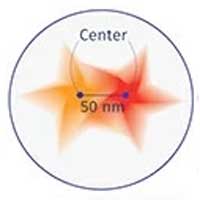 Scientists demonstrate a new approach in fluorescence microscopy that can be used to locate individual biomolecules in 3D space with nanometer-scale precision.
Scientists demonstrate a new approach in fluorescence microscopy that can be used to locate individual biomolecules in 3D space with nanometer-scale precision.
Oct 21st, 2019
Read more
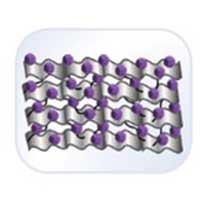 Evening gowns with interwoven LEDs may look extravagant, but the light sources need a constant power supply from devices that are as well wearable, durable, and lightweight. Scientists have manufactured fibrous electrodes for wearable devices that are flexible and excel by their high energy density.
Evening gowns with interwoven LEDs may look extravagant, but the light sources need a constant power supply from devices that are as well wearable, durable, and lightweight. Scientists have manufactured fibrous electrodes for wearable devices that are flexible and excel by their high energy density.
Oct 18th, 2019
Read more
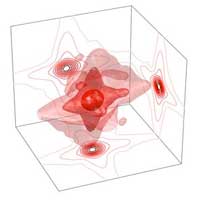 It is crucial for photovoltaics and other technical applications, how efficiently energy spreads in a small volume. With new methods, the path of energy in the nanometer range can now be followed precisely.
It is crucial for photovoltaics and other technical applications, how efficiently energy spreads in a small volume. With new methods, the path of energy in the nanometer range can now be followed precisely.
Oct 18th, 2019
Read more
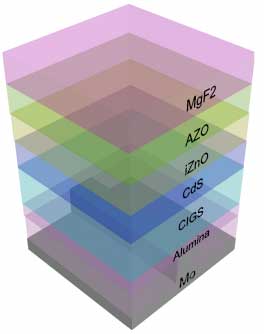 Researchers have developed a theoretical method to improve the efficiency of thin-film solar cells by up to 33 percent. Flexible thin-film solar cells are needed to supply electrical power to fabrics, clothing, back packs and anywhere that a local autonomous power supply is required.
Researchers have developed a theoretical method to improve the efficiency of thin-film solar cells by up to 33 percent. Flexible thin-film solar cells are needed to supply electrical power to fabrics, clothing, back packs and anywhere that a local autonomous power supply is required.
Oct 18th, 2019
Read more
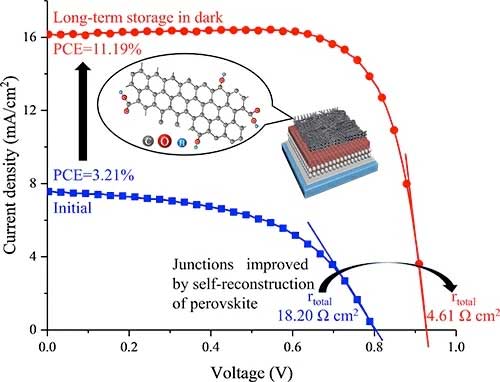 Scientists conducted an in-depth study on how carbon nanotubes with oxygen-containing groups can be used to greatly enhance the performance of perovskite solar cells. The newly discovered self-recrystallization ability of perovskite could lead to improvement of low-cost and efficient perovskite solar cells.
Scientists conducted an in-depth study on how carbon nanotubes with oxygen-containing groups can be used to greatly enhance the performance of perovskite solar cells. The newly discovered self-recrystallization ability of perovskite could lead to improvement of low-cost and efficient perovskite solar cells.
Oct 18th, 2019
Read more
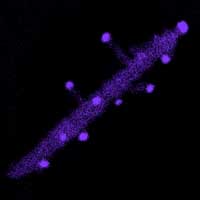 Researchers grew branched GaAs nanowires with a nontoxic Bi element employing characteristic structural modifications correlated with metallic droplets, as well as crystalline defects and orientations. The finding provides a rational design concept for the creation of semiconductor nanostructures with the concentration of constituents beyond the fundamental limit.
Researchers grew branched GaAs nanowires with a nontoxic Bi element employing characteristic structural modifications correlated with metallic droplets, as well as crystalline defects and orientations. The finding provides a rational design concept for the creation of semiconductor nanostructures with the concentration of constituents beyond the fundamental limit.
Oct 18th, 2019
Read more
 Researchers have developed a method that allows for easy determination of the surface free energy of particles as a quantitative measure of particle hydrophobicity.
Researchers have developed a method that allows for easy determination of the surface free energy of particles as a quantitative measure of particle hydrophobicity.
Oct 18th, 2019
Read more
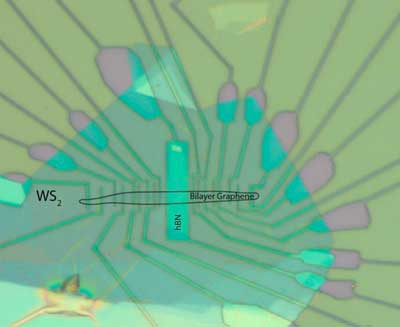 In order to make transistors that operate using the spin of electrons, rather than their charge, it is necessary to find a way of switching spin currents on and off. Furthermore, the lifetime of the spins should at least be equal to the time taken for these electrons to travel through a circuit. Scientists have now taken an important step forward by creating a device that meets both of these requirements.
In order to make transistors that operate using the spin of electrons, rather than their charge, it is necessary to find a way of switching spin currents on and off. Furthermore, the lifetime of the spins should at least be equal to the time taken for these electrons to travel through a circuit. Scientists have now taken an important step forward by creating a device that meets both of these requirements.
Oct 17th, 2019
Read more
The graphene nanomechanical bolometer is the fastest and most sensitive in its class; It is poised to detect nearly every color of light at high speeds and obtain measurements at and far above room-temperature.
Oct 17th, 2019
Read more
 As wearable sensors become more prevalent, the need for a material resistant to damage from the stress and strains of the human body's natural movement becomes ever more crucial. To that end, researchers have developed a method of adopting kirigami architectures to help materials become more strain tolerant and more adaptable to movement.
As wearable sensors become more prevalent, the need for a material resistant to damage from the stress and strains of the human body's natural movement becomes ever more crucial. To that end, researchers have developed a method of adopting kirigami architectures to help materials become more strain tolerant and more adaptable to movement.














 Subscribe to our Nanotechnology News feed
Subscribe to our Nanotechnology News feed